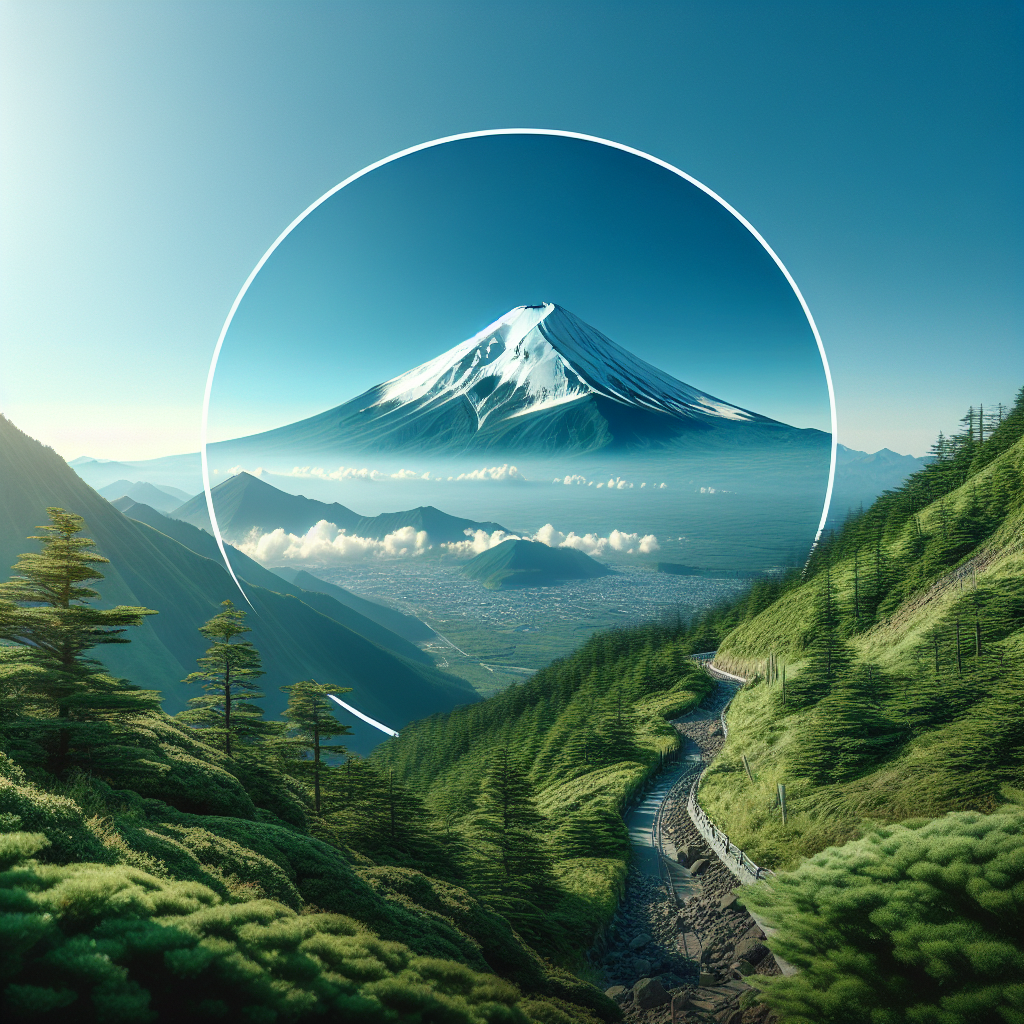Mount Fuji and Beyond: Hiking Japan’s Majestic Mountains
Japan, a country known for its rich culture, advanced technology, and bustling cities, also boasts some of the most breathtaking natural landscapes in the world. Among these, the majestic mountains stand out, offering both amateur and seasoned hikers alike an unforgettable outdoor experience. At the heart of this remarkable mountainous landscape is the iconic Mount Fuji, a symbol of Japan and a must-visit for anyone looking to explore the country’s natural beauty.
Mount Fuji: The Crown Jewel of Japanese Mountains
Mount Fuji, standing at 3,776 meters, is not only the highest mountain in Japan but also an active stratovolcano. Located on Honshu Island, it is visible from Tokyo and Yokohama on clear days. The mountain’s almost perfectly symmetrical cone, covered in snow for about five months a year, has been worshiped as a sacred mountain and experienced significant popularity among artists and common folks throughout the centuries.
Climbing Season and Trails
The official climbing season for Mount Fuji is early July to early September, when the weather is relatively mild, and the mountain huts are open. There are four main trails to the summit: the Yoshida, Subashiri, Gotemba, and Fujinomiya trails, each offering different challenges and scenic views. The Yoshida trail is the most popular, featuring many huts where climbers can rest. Regardless of the chosen trail, the experience of watching sunrise from the summit, known as Goraiko, is considered a spiritual experience by many.
Beyond Mount Fuji: Japan’s Mountainous Splendor
While Mount Fuji may be the most famous, Japan’s rugged landscape is dotted with countless other mountains, each offering unique hiking experiences. Here are a few notable mentions:
The Japanese Alps
Divided into three ranges: the Northern (Hida), Central (Kiso), and Southern (Akaishi) Alps, this area offers some of the most challenging and rewarding hikes in Japan. The Northern Alps, also known as the Japan Alps, are particularly renowned for their dramatic peaks, deep valleys, and hot springs.
Mount Tateyama
Part of the Northern Alps, Mount Tateyama is a sacred mountain, offering various routes for hikers. The Tateyama Kurobe Alpine Route, famous for its snow corridor, provides stunning views and an unforgettable experience.
Mount Hakusan
Another of Japan’s three holy mountains, Mount Hakusan is located in the central part of Honshu. The mountain is known for its alpine flora, waterfalls, and pristine landscapes. The hike is challenging but rewarding, with several routes available for different skill levels.
Kumano Kodo Pilgrimage Routes
For those interested in a more spiritual journey, the Kumano Kodo in the Kii Peninsula offers a network of ancient pilgrimage routes winding through the mountains. This UNESCO World Heritage site is a unique blend of natural beauty and cultural heritage, offering a different perspective on Japan’s mountainous landscapes.
Hiking Tips and Safety
Hiking in Japan’s mountains can be an exhilarating experience, but it’s essential to be prepared. Here are a few tips for a safe and enjoyable hike:
1. Check the Weather: Weather conditions can change rapidly in the mountains, so it’s crucial to check the forecast and be prepared for all eventualities.
2. Stay on the Trails: To protect the natural environment and ensure your safety, always stay on the designated trails.
3. Pack Appropriately: Bring enough water, food, and clothing layers, as temperatures can vary significantly.
4. Respect Wildlife: Japan’s mountains are home to diverse wildlife. Maintain a safe distance and do not feed the animals.
5. Leave No Trace: Preserve the natural beauty for future generations by carrying out all trash and minimizing your impact.
FAQs
Q: Do I need a guide to hike Mount Fuji?
A: While a guide is not mandatory, it is recommended for inexperienced hikers or those unfamiliar with the area.
Q: Is there an entrance fee for Mount Fuji?
A: There is no entrance fee, but a voluntary contribution of 1,000 yen is suggested to maintain the trails and facilities.
Q: Are the hiking trails in Japan open year-round?
A: Many trails, especially in higher altitudes, are closed during the winter due to snow. It’s best to check the status of trails before planning your hike.
Q: Can I camp on Mount Fuji?
A: Camping on Mount Fuji is not allowed, but there are mountain huts available for overnight stays. These need to be booked in advance.
Q: How difficult is it to hike Mount Fuji?
A: Hiking Mount Fuji is considered challenging due to its elevation and the steep ascent. However, with proper preparation and physical conditioning, many find it an achievable goal.
Exploring Japan’s mountains offers a unique blend of physical challenge, spiritual enrichment, and natural beauty. Whether standing atop the iconic Mount Fuji or traversing the ancient Kumano Kodo pilgrimage routes, the experience is sure to leave an indelible mark on your heart, embodying the essence of Japan’s majestic landscapes.
